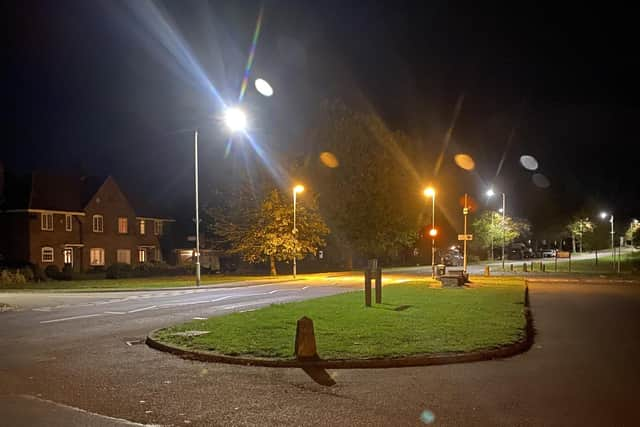Use of LED streetlights in Bedford questioned over negative impact on insects
This article contains affiliate links. We may earn a small commission on items purchased through this article, but that does not affect our editorial judgement.
and live on Freeview channel 276
An academic has claimed Bedford Borough Council doesn’t appear to be in “possession of all the facts” about LED streetlights’ impact on the environment.
Councils, such as Bedford Borough, are changing their streetlights to ‘eco-friendly’ LED bulbs as they are more energy-efficient and cheaper to run.
Advertisement
Hide AdAdvertisement
Hide AdBut Darren Evans, professor of ecology and conservation at Newcastle University, has said findings on street lighting have found that these LED lights have a “negative effect” on nocturnal insect populations.


Field studies by the UK Centre for Ecology and Hydrology, Newcastle University and Butterfly Conservation found the number of moth caterpillars in hedgerows under LED streetlights was 52 per cent lower than in nearby unlit areas.
The number of moth caterpillars in hedgerows lit by old-style sodium lighting was 41 per cent lower than in unlit areas.
Professor Evans told the Guardian that the transition to LEDs has “poorly considered” the ecological and human costs of such a policy.
Advertisement
Hide AdAdvertisement
Hide AdA Bedford Borough Council council spokesperson said: “Changes to LED streetlights have resulted in an annual reduction of 67% carbon and 33% energy between 2016/17 and 2021/22 in Bedford Borough.
“This is an annual saving of 1,544 tonnes of carbon dioxide and 1,827,548 kW hours.”
They added that the issues referred to have not “currently been proved”, therefore are not being considered by the council.
“The council doesn’t appear to be in possession of all the facts,” professor Evans replied.
Advertisement
Hide AdAdvertisement
Hide Ad“Although there is more work to be done, particularly regarding mitigating the impacts of streetlights on biodiversity, the science is unequivocal.
“Sadly, the switch from old high-pressure sodium lamp technology to LED makes things worse,” he said.
He added: “Most scientists agree that it is a number of factors combined that are leading to insect declines.
“A report by Butterfly Conservation titled The State of Britain’s Larger Moths 2021 details dramatic declines for many species,” he said.
Advertisement
Hide AdAdvertisement
Hide AdThe report said the precise causes of all these changes is unclear.
“But since that report was published, we have provided the first direct evidence that streetlights do negatively impact local moth populations,” professor Evans said.
“So, it is a combination of factors causing the issues, but we can now be sure that street lighting is significant,” he said.
He added: “Moths are absolutely beautiful in my opinion, and beat butterflies hands down, but I concede that some people don’t like moths. That said, our research has shown that they are important but overlooked pollinators.
Advertisement
Hide AdAdvertisement
Hide Ad“In England, we‘ve found during our work that a quarter of moths caught carried pollen of dozens of plant species.
“But streetlights significantly disrupt the pollination processes they perform, with one study even showing negative consequences for seed production in plants.
“Given the importance of pollinator conservation, not least for pollinator dependant crops that humans rely on, then we should absolutely be worried by the negative impacts of light pollution on these important animals,” he said.
Bedford Borough Council was approached for a further comment following professor Evan’s response to its “not proven” claim.
The spokesperson said the council had nothing further to add on the matter.